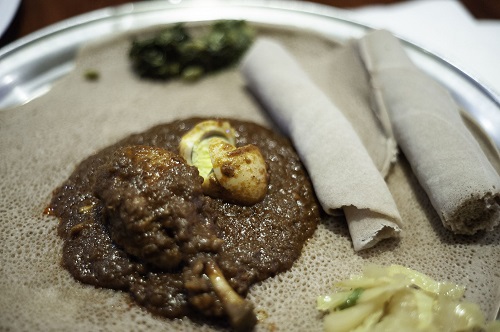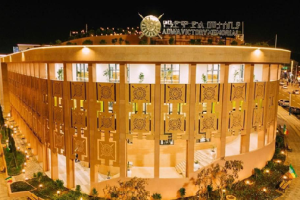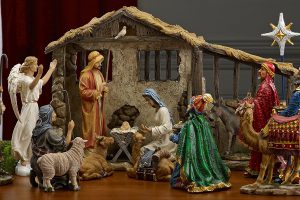
There is no doubt about the spirituality of most Ethiopians as more than 90 per cent of them are members of religious denomination or adhere to unofficial faiths or belief systems. Christianity came to Ethiopia in the 4th century while Islam followed in the 7th.
These are the two leading religions in the country while there are also a number of home-grown spiritual practices that command the following of millions of people. In most countries, religions are on the wane leaving the space for secular institutions. In some developed countries, churches are being converted into restaurants and recreational centres while the opposite is the case in Ethiopia.
In Ethiopia. new churches and mosques are being built everywhere and the number of religious adherents is increasing rather than decreasing. This is particularly true for young people who are more and more attracted to established faiths with unprecedented passion. The Ethiopian Orthodox Church is enjoying the massive following of young people who are most visible during the Timket (Epiphany) holidays when the tabots, or replicas of the Arc of the Covenant, make their annual journey and congregate for the open air mass and rituals at Janmeda.
Easter is in fact a time of deprivation when the faithful are prohibited to eat meat and butter, the two cardinal passions of most Ethiopians. In every culture, from the north, to the south , west and eastern parts of the country, the best traditional foods are unthinkable without a heavy addition of meat and butter. And from the biological point of view, depriving the body of these two foods is both a healthy measure and a punishment for the famously food and butter loving Ethiopians.
The endurance of the Christian believers during the two months of the fasting season of Lent is in fact legendary to say the least. In addition to forgoing the two culinary passions, many Christians forgo even fasting food and water until late afternoon after they return from church. And the last three days of Lent starting from Thursday, are dedicated to complete abstinence from food and water by the most devoted of the devotees. They break their fast only on Saturday after 3:00 AM, following the long established tradition.
Easter holiday is not only a deeply spiritual moment but also a particularly meat-loaded gastronomic occasion. Generally speaking, holidays are simply unimaginable in Ethiopia without meat-based foods. If there is no meat there is no joy in the full sense of the term.
So, every holiday, including Ester, is believed to be a good opportunity for mass consumption of meat in all its forms. Even the media are apparently fond of reporting about the popular meat eating habit of Ethiopians. During one of the recent holidays, many FM radio stations were simultaneously reporting about Ethiopians’ love affair with meat-raw, cooked, minced and buttered and so on.
In former times, only men were expected to become great meat eaters. Nowadays women and young girls in particular are seen in public and at many meat shops, cutting chunks of raw meat with knives and enjoying. This might not look very aesthetic; nonetheless, our women often accompany their male counterparts right into the some of the famous meat joints in town and affirm their ‘gender equality’ with knives in their hands.
Meat in Ethiopia is a celebrated food so to say. Maybe this is because Ethiopia is one of the countries in Africa rich in cattle. Meat may not be the best food as coffee is the best popular beverage as many people believe, yet it is sometimes considered the symbol of physical force and prowess. I sometimes wonder whether meat inspired men to physical strength, or on the contrary, lions copied meat eating from men who boast about their physical stamina.
Meat is also the material out of which the battlefield bravado and the ensuing legend of Ethiopian woven during the Korean war back in 1953. The popular tale is both astounding and shocking although the tactic and the psychological effect might be astute. Ethiopian soldiers were said to be carrying beef in their backpacks and during one of their engagements, they sat on the bodies of dead enemy soldiers and started to cut eat chunks of the beef and eat them.
The enemy soldiers were terrified as they were deceived into thinking that Ethiopian soldiers were so ferocious that they have no mercy on dead enemy soldiers. Enemy combatants were said to have abandoned their foxholes and ran as fast as their legs could carry them while the Ethiopian soldiers continued the offensive from behind. Not a bad tactic indeed.
Most Ethiopian communities are known for the machismo of their male members while women occupy a somewhat subdued presence during holydays like Ester or on ordinary occasions. Male domination is a reality that no revolution has so far managed to overcome completely. And one element in the macho act is believed to be meat consumption. In rural communities as well as in some urban centers like Addis Ababa, sheep and oxen are consumed in great numbers during Easter holidays depending on their economic status of the consumers.
Another tale related to the price of meat says that in the remote past a well-fed fowl could be purchased cheaply, the price going as low as 25 or 50 cents and sheep could cost something like 4 birr. At last week’s Easter market the average price for a hen was 500 birr while a sheep fetched as much as 7000 birr. The price varied with variations in economic factors such as the gap between demand and supply. The age of cheap meat was a reality when Ethiopia’s total population did not exceed 20 million people. Now we are 110 million people and growing at an alarming rate.
The phenomenon known as kircha, or the sharing of meat among groups of men after killing oxen bought through the contributions made by the same members is a widespread practice during holidays. This gives an alternative to the expensive meat bought in ordinary meat shops.
Early in the morning on Ester day, groups of people wake up and start killing oxen and sharing the meat according to established rules and among members who contributed money for the purchase of the animals. The kircha is an occasion for meat lovers to display their skills in sharing the meat in equal parts but also their love affair with raw meat they wash down with the arake, a powerful liquor that is believed to speed up the digestive process as well as boost the festive mood.
As we said, coffee is the most popular beverage in Ethiopia and meat the most popular food in Ethiopian culture. Meat is not only the best food item in Ethiopia. It is also the symbol of richness or wealth as cabbage and lentils are the signs of poverty and even hunger. There are many sayings in Amharic that laud one food item and ridicule another. Meat in general is considered in most Ethiopian cultures as the food of lions in the figurative and real sense of the term.
The prevailing popular lore or myths make it evident that eating raw meat may be a uniquely Ethiopian indulgence. They also insist that it has to be consumed with some doze of alcoholic beverage in order to neutralize some of the health hazards related to meat consumption. This wisdom prevailed in Ethiopia well before modern medicine discovered that alcohol taken with moderation can indeed help neutralize cardiovascular illnesses.
Among the Amharic saying that ridicule non-meat food items is the one that roughly says, “If you try to appease the stomach with a cabbage meal, you will lack the strength to walk up a hill.” There is some truth in this assertion as there is truth in the medical statement about too much meat consumption being the cause of many non-communicable diseases such as obesity, diabetes and strokes. The non-scientific assertions about the merits and shortcomings of Ethiopian food items are sometimes based on popular misconceptions.
What else would you say about a society that believes non-meat food is for ‘weaklings’ while meat is the food of the courageous the powerful and the macho. Many of the rapists in this country must be graduating from the school of thought that considers meat the food of the sexually super performers who are in fact mental perverts whose maladies are wrongly portrayed as their main virtues.
You are certain to be a laughing stoke if you try to tell people that meat has no magical quality other than being rich in protein provided that one chooses the type of meat one often consumes. Lean or red meat, that is to say containing less fat, is generally considered healthier than the white version. Science aside, Ethiopians are mostly fond of fatty meat whose white texture is a delight for the eyes even though it might be a threat to good health.
Until very recently, consuming too much meat and having a protruding or pot belly was considered a sign of wealth that could be the object of admiration if not respect from the public. They call it beer belly in Kenya and in east Africa in general although the cause of the protruding belly is not beer but the meat you consume with the drink as the science says.
When it comes to breaking the two-month fast, the last week before the end of Lent is remarkable for the hectic moment as people crowd the markets in order to buy the inevitable food items that go into the making of the great Easter feast. Both the well-to-do and the paupers brush shoulders at the hen market because an Ester meal without chicken stew is not only incomplete but also tasteless.
Then comes the dreaded morning after the heavy holiday expenses that give you many headaches as you go into the arithmetic of cost and benefit. Many of us even go as far as borrowing money to make the holiday a real Ethiopian holiday and sustain the festive mood well into the following Sunday, called dagmay tensay, or the second Easter, another occasion maybe born of Ethiopians’ love of fun and food.
BY MULUGETA GUDETA
The Ethiopian herald May 15/2021





